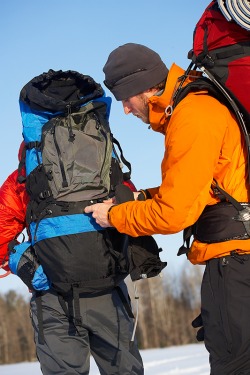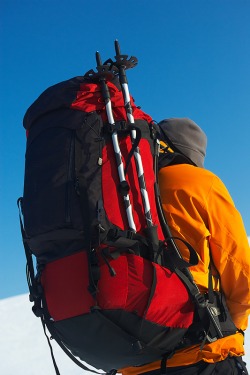Guide to Choosing Internal Frame Backpacks

As opposed to external frame backpacks, internal frame hiking backpacks provide better comfort and stability along with a stable and lighter frame, and better load distribution.
Choosing an internal frame backpack may be daunting to a beginner though some may not care at all and then later find out it’s not right for them if they’re not lucky.
It’s important to know that you are buying comfort and not just features.
You can, of course, stick to one hiking backpack and most people probably will.
But if you do a lot of backpacking across different conditions, terrain and climates you may need more than one backpack because it has become clear now more than ever that there is no one backpack that is best for all conditions.
Choosing the right type of Internal Frame Backpack
The question whether to choose between internal frame backpacks and external frame backpacks is no longer relevant in the the favor of the I-frames. Most stores, online and offline don’t even stock external frames anymore.
Under different conditions each type of internal frame backpack offers specific advantages so depending on where you will be going or what type of hiking whether you’re desert hiking, mountain hiking, trail hiking, going for an expedition, trekking or just traveling, the choice of backpack will be different.
The immutable law of the universe is that the more functions a device is designed to perform, the less perfectly it can perform each of those functions. The same goes for internal frame backpacks or any kind of hiking backpack.
The problem is rarely as simple as choosing a backpack for an expedition or traveling and so on because your needs fluctuate from time-to-time and trip-to-trip.
Your decision on choosing an internal frame backpack then should be based on the range of activities and how much you can afford.
If you have deep pockets then buy a few hiking backpacks suitable for each different hiking niche.
If cash is tight and you do a fair amount of backpacking in different types of terrain and conditions, and abroad, you might want to consider a travel bag that’s also a mildly modified internal frame expedition backpack.
Backpack Volume

Volume is another major concern besides the type of internal frame backpack. Your backpack should fit all of your belongings without anything hanging out or tied on the outside.
Having bits of equipment hanging out of your hiking backpack only makes for poor load distribution, unwanted weight shifts and could be disastrous in rain and snow.
Some would say that less is more and that if you have space, you will fill it, no matter how short the trip. But wouldn’t you agree that it’s better to cultivate a sense of discipline than let your hiking backpack impose it on you?
There are others who use mathematical formulas to calculate the volume of backpack that is needed based on body weight, the number of days of the trip, resilience of the individual, the season, gear type and the size of your group or whether you’re hiking solo.
Whatever it is, it all comes down to how much you can comfortably carry. If you want to able to adjust for short trips without carrying more than you need then go for internal frame backpacks that have compression straps, bellow pockets and removable components.
Fitting
Once you have decide on the type of internal frame backpack, it’s time to customize the fit.
The right size of backpack is based on your torso length. Use a flexible measuring tape or a string to measure from the base of your neck to the top of your hips and choose the correct size according to the manufacturer’s recommendations.
With the pack loaded with at least 20 pounds of weight it’s time to try them on and see how it feels on your back. Adjust the straps and see if you can make it feel even more comfortable to wear.
If you’re satisfied with the comfort then you’re ready to buy but that’s not the end of the story. Be sure to bring the backpack on test runs. Try it at home or bring it on a day hike or hike in the park. Try out the straps and figure out which ones work best. Try to find problems with the backpack before you go out for a hiking trip.

